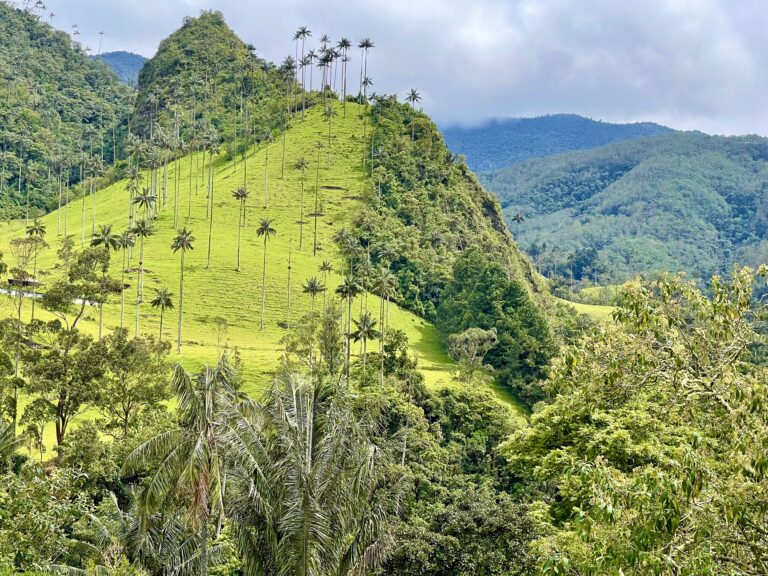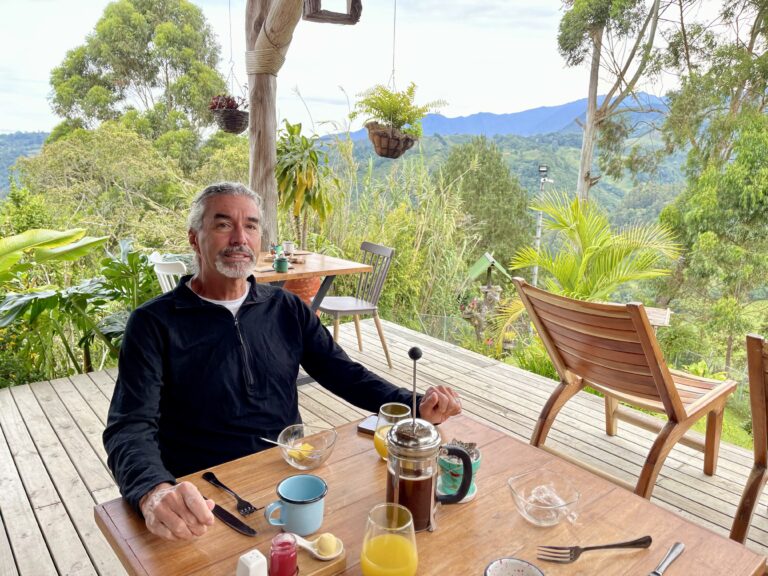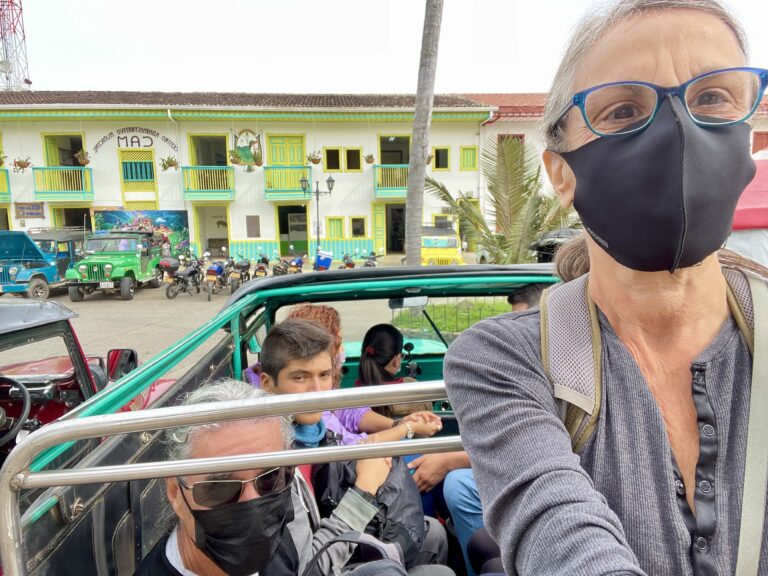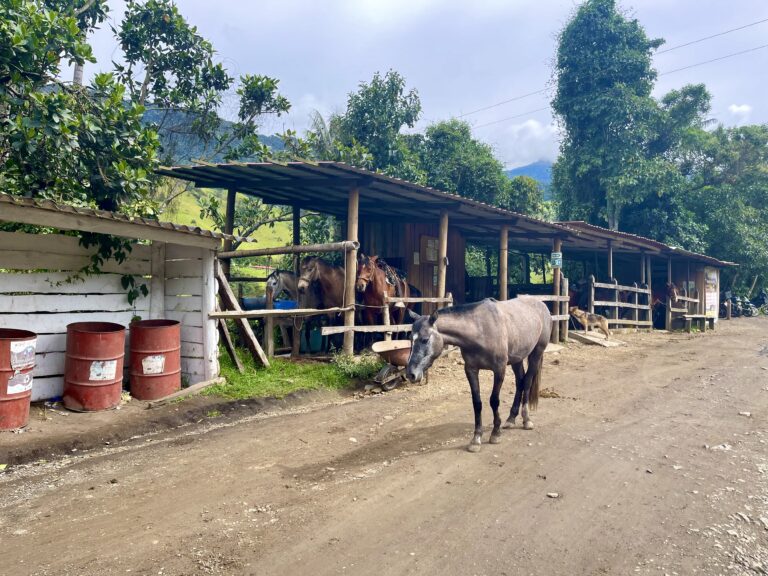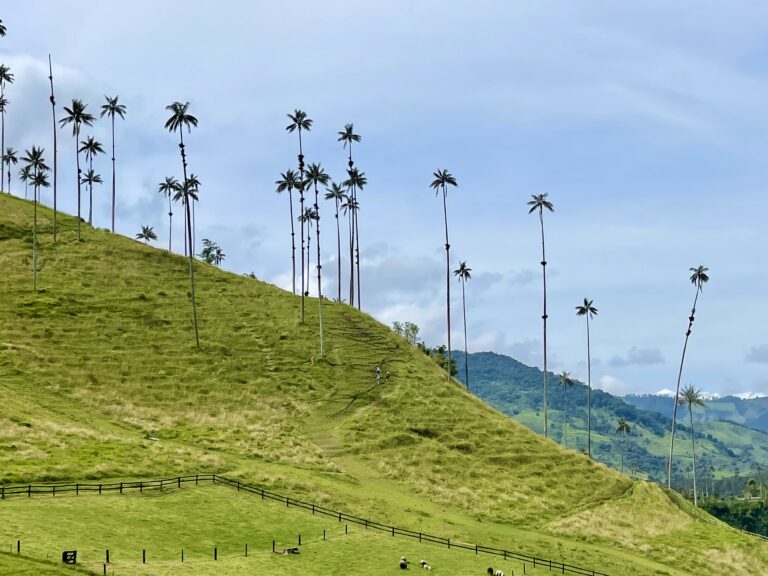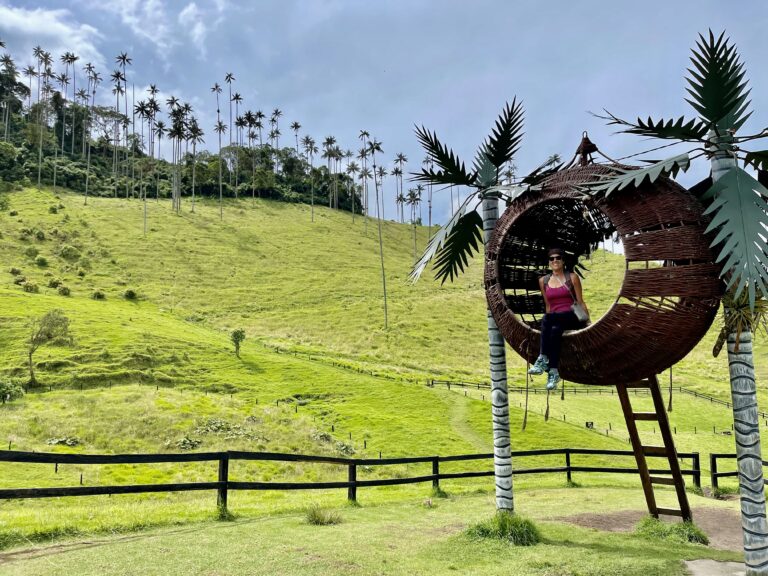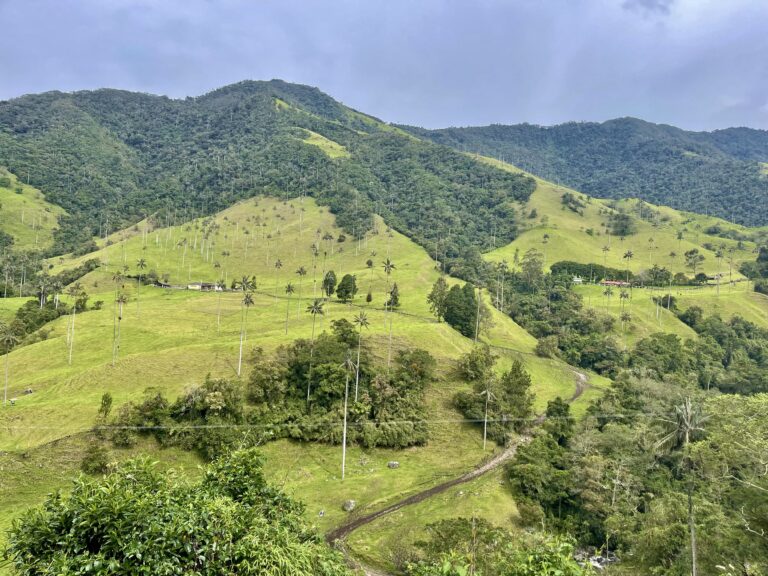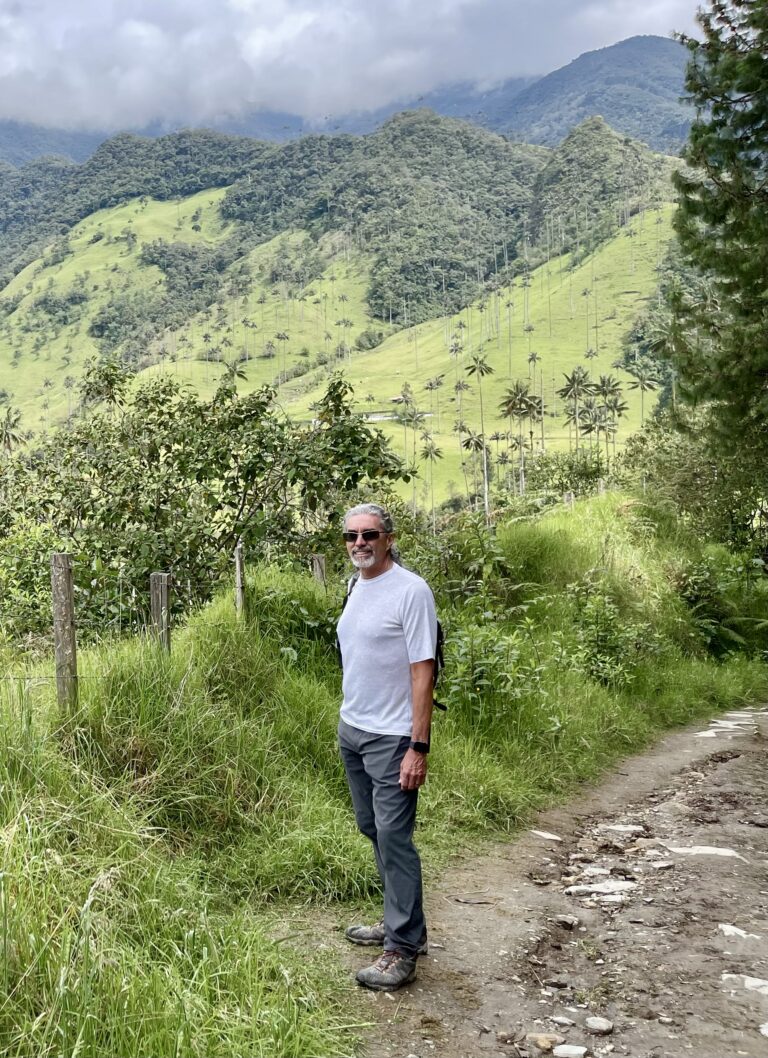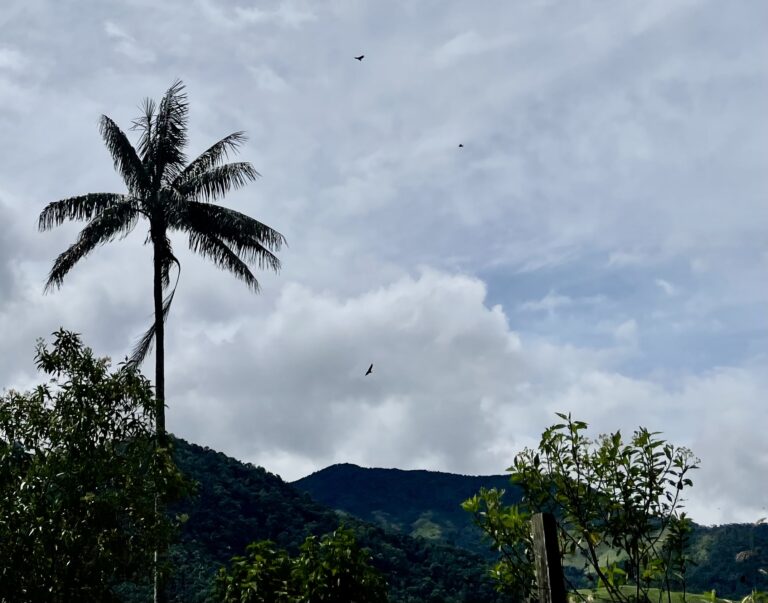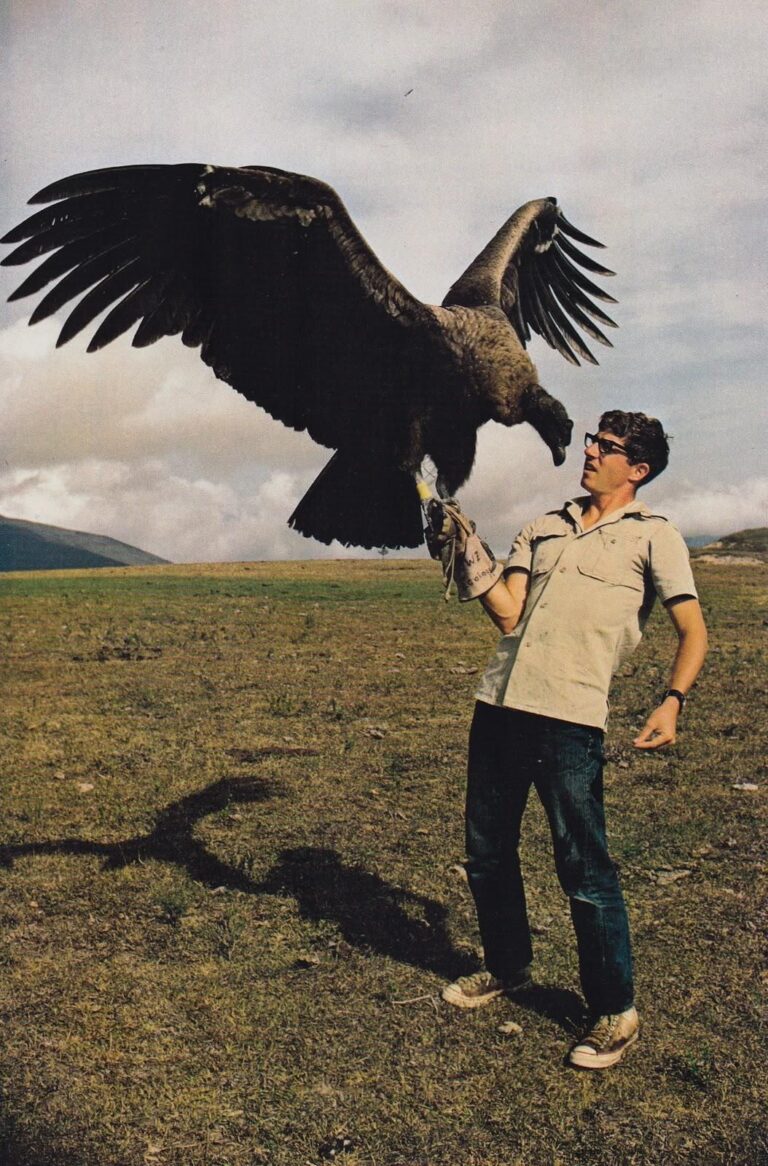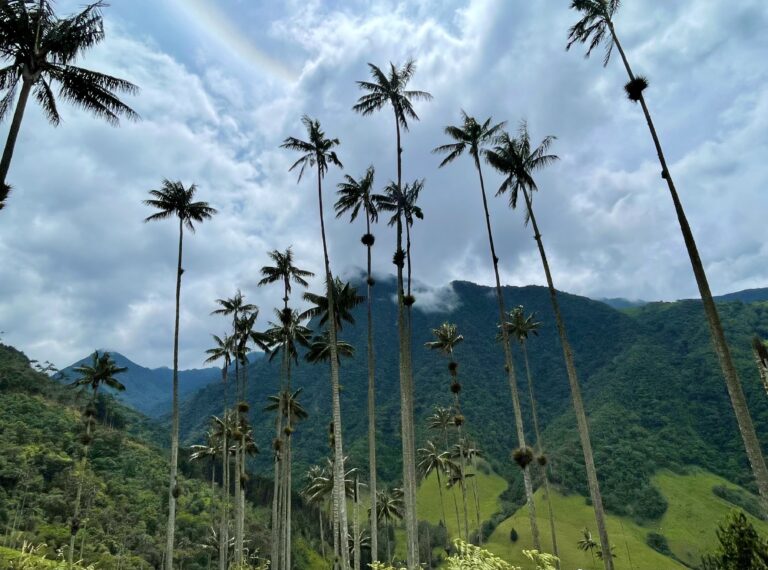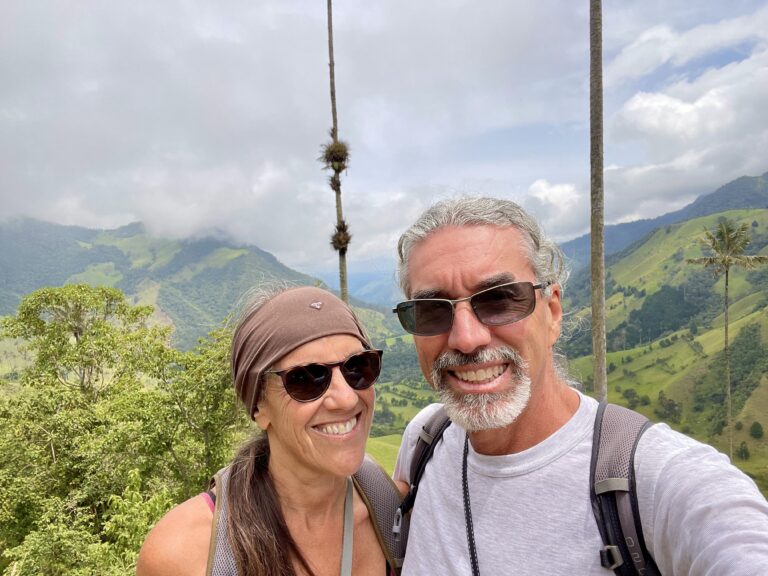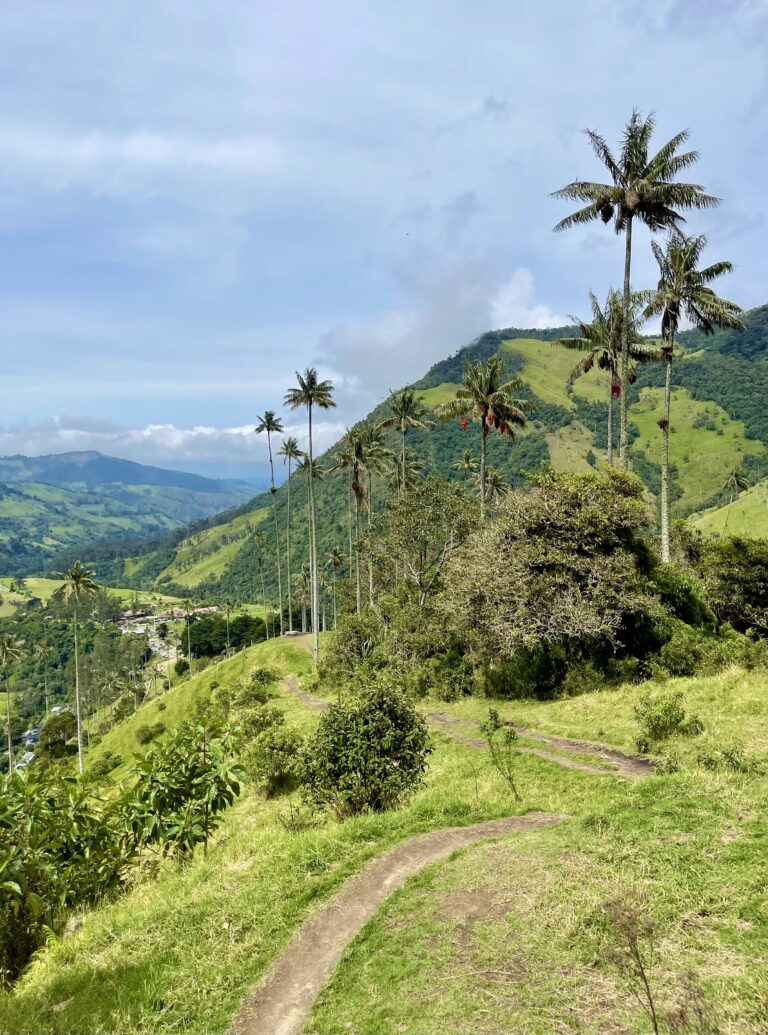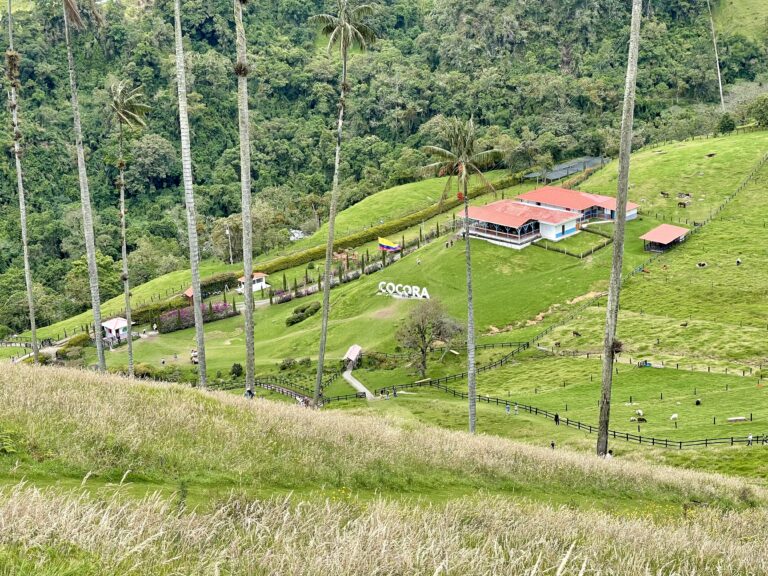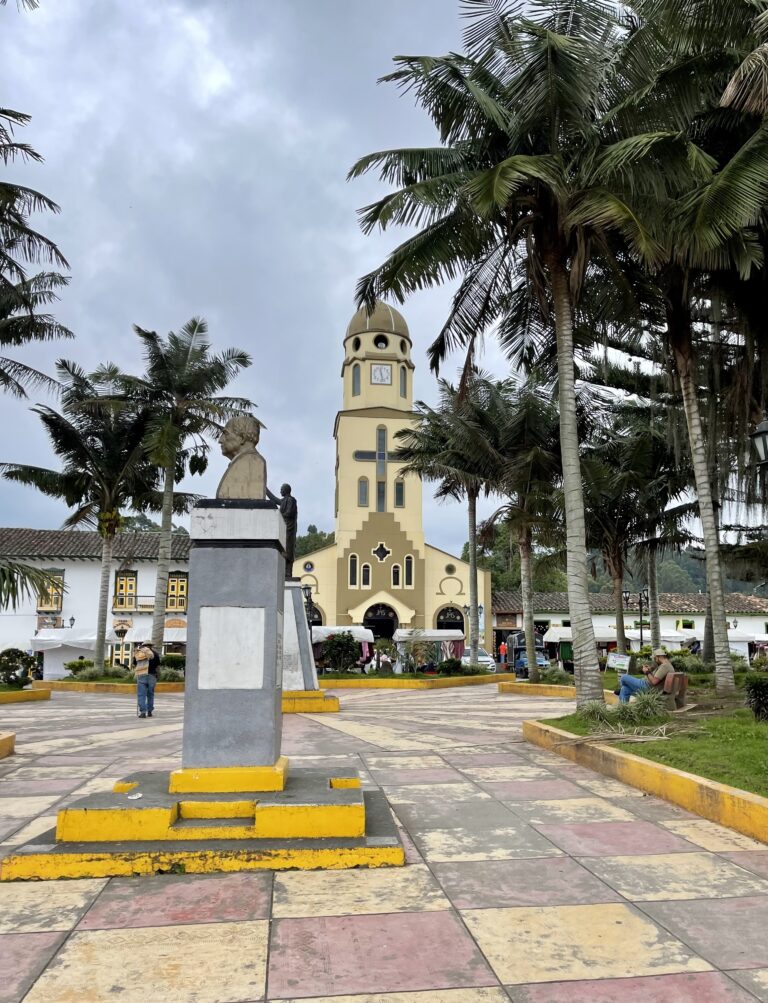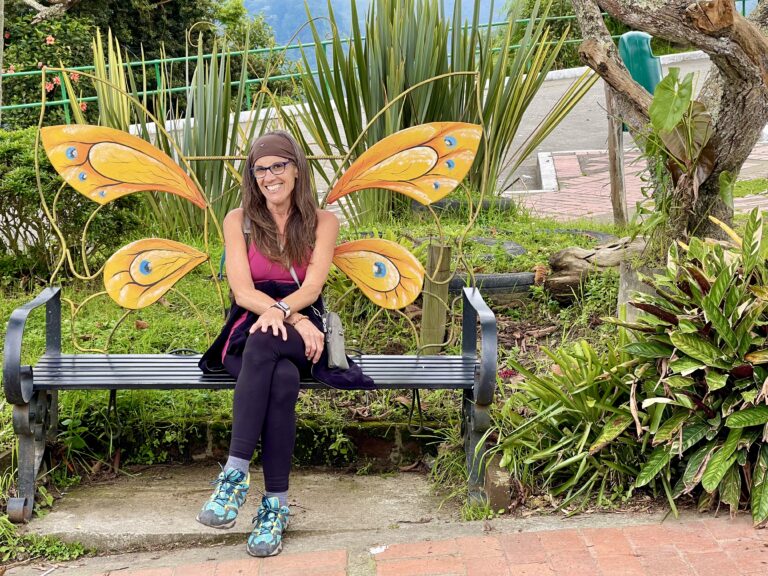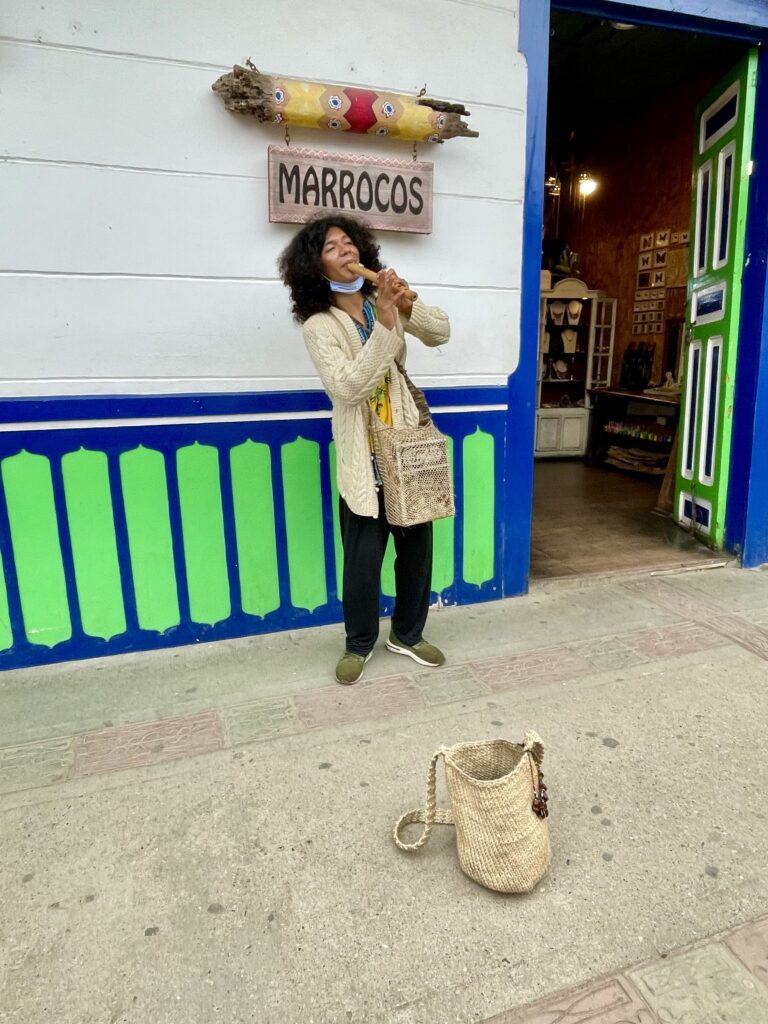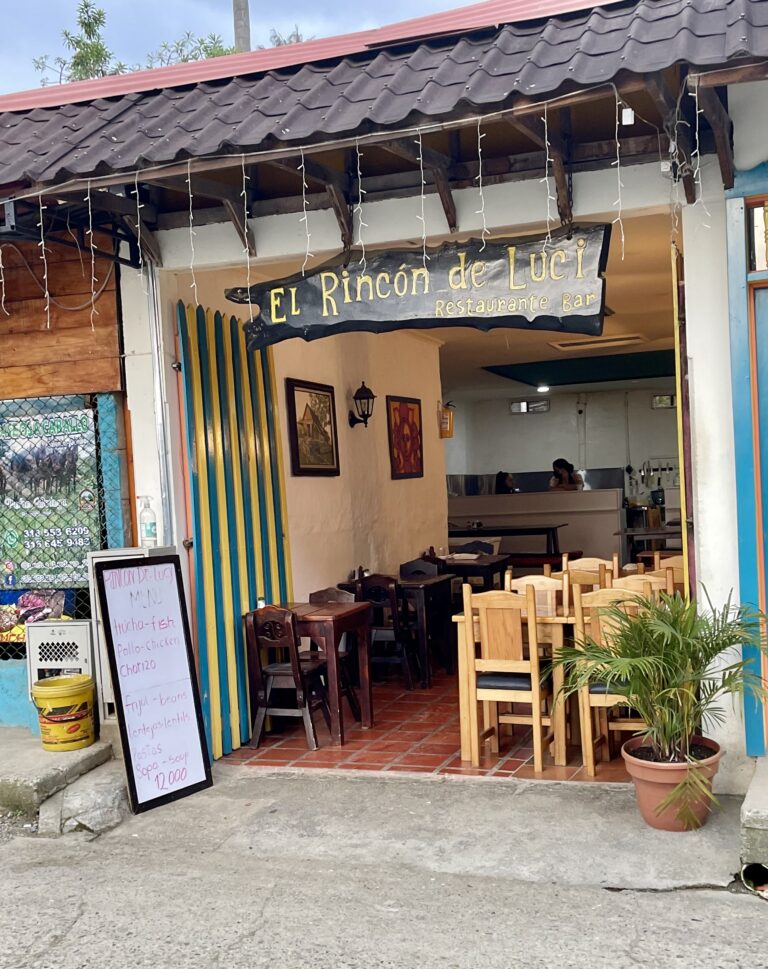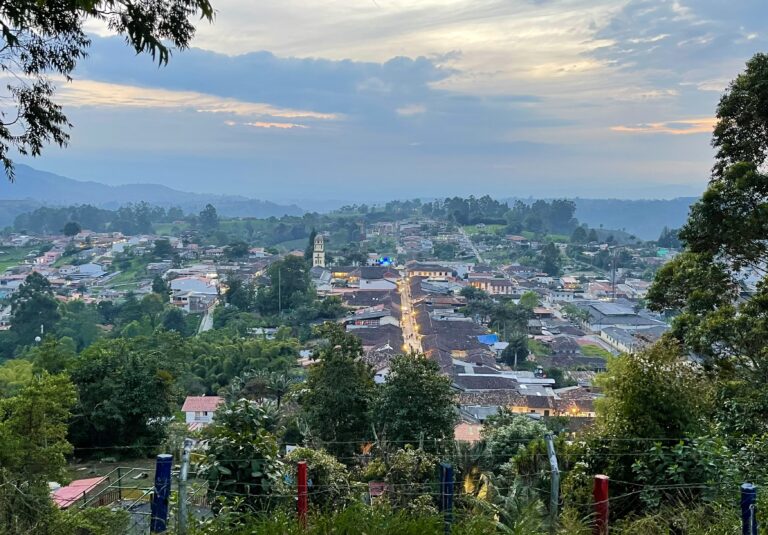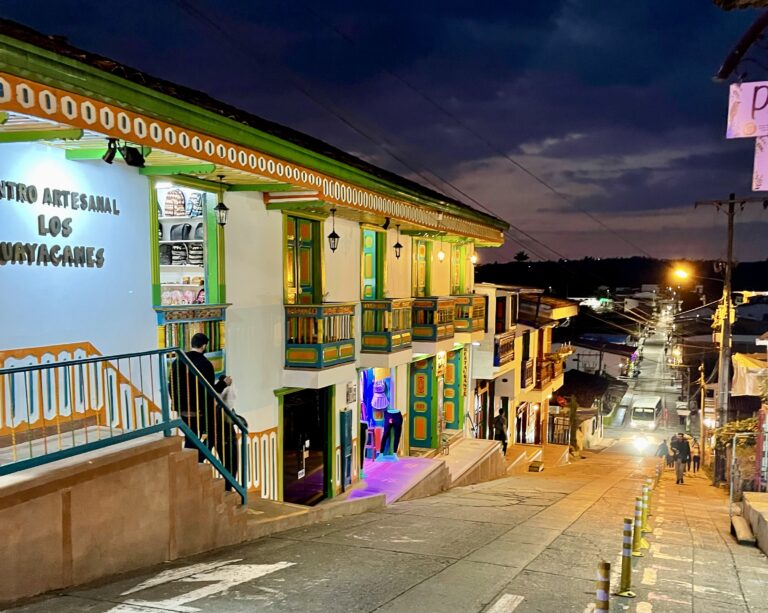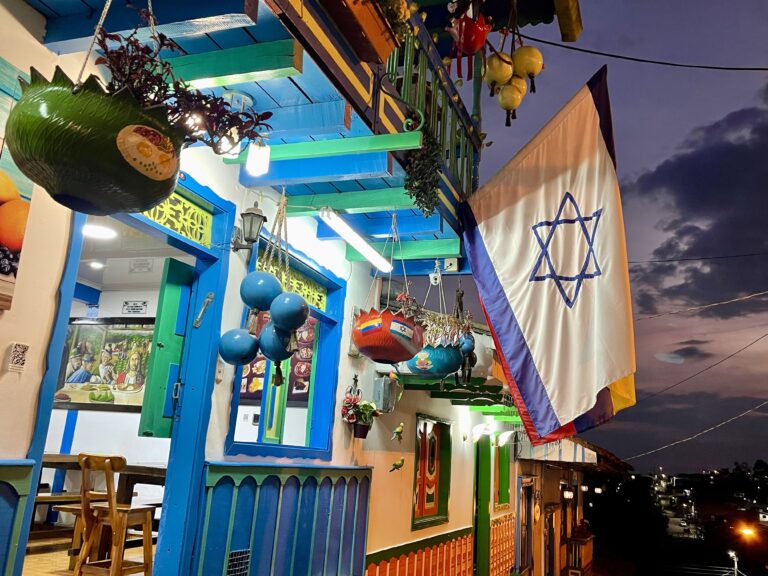Like dinner the night before, breakfast was good but not amazing. Susan’s coffee arrived as an individual French press and she was surprised that it wasn’t really that great, given we were in Colombia’s famous coffee region.
After our meal, we grabbed our daypacks, filled and treated our water bottles and then walked 15 minutes to the town square. We were looking for transport to Valle de Corcora, a Colombian national park where we’d be taking a hike to explore one of the few stands of wax palms anywhere. Quindío wax palms, Colombia’s national tree, are the tallest (and one of the rarest) palms in the world.
We found the square easily and saw a cluster of jeeps already filling up with passengers. Transport to the park was only by a fleet of older jeeps that had been converted to carry lots of people. Some jeeps were completely open while others had a poorly fitting cover in the event of rain.
It cost only a dollar each roundtrip for the twenty-minute drive up to the park entrance. After paying the fare, we boarded a Jeep that was leaving in a few minutes. In the front there were three seats, two for passengers and one for the driver, and in back there were two more seats facing each other that could hold three to four each (depending on size), and three more people could stand on the rear bumper and hold on. They were definitely not DOT approved.
When the road went from being a narrow paved road to an even narrower dirt road, we understood why Jeeps were the means of transport. En route to the park, we saw lush hillsides of coffee plantations. Tomorrow we’d visit one, but today it would be all about the palm trees.
When the Jeep let us off in a muddy parking lot the other passengers walked off in different directions. It seemed we weren’t quite at the park yet and we were confused on how to get to the entrance. Unlike U.S. National Parks, there were no official signs anywhere, though there were some vendors with their own confusing signs trying to get people to buy a horse trip or a guide.
We walked up a dirt road until we found someone to ask where the entrance was. He spoke in rapid-fire Spanish and neither of us had any idea what he said. Finally, in exasperation (his and ours), he led us back down the road to someone who could speak a little English who told us go back up the road the first guy led us down and continue maybe 1,000 feet farther. Finally, we found the entrance and paid US$1.50 each.
We headed up the steep trail and suddenly palm trees up to 200 feet high and scattered about the steep hills towered above. They looked like a normal palm had been stretched to perhaps five times its usual height and we could barely see the fronds at the top. It was like nothing we’d ever seen before, and we decided that they were the redwoods of South America.
It felt odd to even see any palm trees at an elevation of 6,500 – 10,000 feet, let alone to see colossal palms dwarfing all the surrounding flora. Yet there they were, towering high above the nearby evergreens.
Wax palms, so-called due to wax covering their trunks, are native only to where we were—in the Corcora Valley in Colombia’s Andes Mountains. Sadly, the trees are on the verge of extinction. In the last 35 years, the number of wax palms has declined by over 75 percent and there are now only about 2,000 palms left in the Corcora Valley. The decline is due to extensive logging of the trees in the past (now prohibited) to use in construction and to harvest the wax, and to the conversion of much of the valley area to pasture land.
As we climbed the trail farther up, now nearly 9,000 feet high, we saw huge black birds with white tips underneath. Andean condors! They are the largest flying birds in the world, bigger even than California condors, with a wingspan up to 11 feet. We watched them soar above us, then below us in a deep wide valley. The impenetrable jungle on one side of us contrasted with the open space where the condors flew.
Clouds moved in to cover the snowless peaks that towered over us at 10,000 feet. It was in the mid-50s and very humid with the sky threatening rain so we eventually started back down the steep trail. A hundred plants we’d never seen before lined the trail and odd butterflies flew into some of the small bright flowers.
Thankfully, just as quickly as the clouds came they drifted away as we began our descent. On the way back, we met a brother and sister pair (Kevin and Betsy) on the trail, visiting from the U.S., and chatted a while, enjoying one of the few conversions in English we’d had in quite some time. Like us, Betsy was planning to head to the Amazon soon and we hoped we’d see her there.
Back at the muddy parking lot, we boarded our Jeep and headed back to town, picking up a couple of machete-wielding campesino hitchhikers along the way.
In town, we wandered the streets some more, window shopping and people watching. The town of about 7,000 people was vibrant without being busy and the vast majority of the tourists were local. We heard very little English anywhere.
Eventually, we went back to our room to chill for a while. And chill we did—the rooms had no heat and it seemed to always be just a little too cool inside. The showers had almost-hot water, definitely not enough to warm up, so we stayed dressed in our layers.
Before long, we decided there wasn’t much point trying to relax in our chilly room, so we decided to head back into the town. We wanted to have an early dinner there so we wouldn’t have to walk back to the lodge along the dirt trail in the dark, but we brought our headlamps just in case.
A blog Susan read mentioned a great little local restaurant with unbelievably low prices, so we set out to find El Rincon de Luci. The place was as tiny as described with a few small tables. There were no menus. Instead, the owner came by and asked if we wanted trucha (trout), pollo (chicken) or cerdo (pork). We ordered one trout and one chicken dish. A minute later were served refreshing cups of lemonade, followed by a really good fish soup, seasoned perfectly. Platters came next, complete with beans and rice, salad, fried plantains and potato. It was a big and enjoyable dinner and the total bill for the two of us was only US$6.00.
After dinner, we hiked up several hundred steps to a lookout over the town in the evening light. We talked about other places this size that we liked as well; Loreto, Mexico and Sarlat-la-Canéda in France came up. We really like busy but not frantic towns of this size, with mostly local people near natural beauty or historic places.
After enjoying the sunset view, we went back down the long staircase. Now that the sun had dropped below the mountains, the sky darkened and the city’s lights winked on. We wandered the town some more to see what the city’s vibe was after dark. We were glad we had our headlamps as we wound our way up the trail to our hotel above the town.

